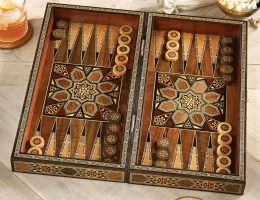IRAN ART EXHIBITION: PERSIAN HANDICRAFTS SHOW THE IRANIAN CULTURE & ART
Persian handicrafts! Reflections of Iranians’ love for arts! Echoes of the antiquity of Persian culture! And ripples of the Persian fascination with nature, geometry, and spirituality! each fine Persian piece is the artist’s attempt at creating paradise! And bringing back home a piece of Persian art, is like taking a piece of a nation’s soul with you as a souvenir. But which piece to take depends on your taste, and your knowledge of how to choose and where to find the finest of them.
The Story of Persian Handicrafts
The Persians’ love of arts and handicrafts is as deep-rooted as the Persian civilization has been traced. From this strong root, Persian arts and handicrafts have been thriving through different periods and in contact with other civilizations. A variety of precious artefacts that include textiles, jewelry, metal works, pottery, and carpets have been found from different ancient eras. Then, the arrival of Islam in Iran gave Persian art special twists and made it flourish in certain branches. Passed down from generation to generation, and now Iran prides in infinite colors and patterns, and a charming collection of Persian handicrafts. Now, as one of the world capitals of handicrafts, Iran prides in its handicrafts’ rich background, variety, intricacy and abundant production. Persian artefacts showcase the Iranian’s fascination with geometric patterns, imaginative designs, and motifs from nature.
Where to Buy Persian Handicrafts
You can find most handicrafts- like carpets, Minakari, pottery, Persian inlaid, etc.- all over the country. But getting your souvenir from the city that has a reputation for it sure makes a difference. The top destinations for handicraft shopping are Isfahan and Shiraz. In Isfahan’s dazzling Grand Bazaar, part of Naqsh-e Jahan Square (UNESCO), you’ll find the country’s first-rate Minakari, Ghalamzani, Ghalamkari, Monabbat, and traditional painting. In Shiraz’s Vakil Bazaar and Seray-e Moshir, you’ll find the country’s top works of Khatam (inlaid), Haft Rangi tiles, carpet, Gabbeh, Kilim, and felt rugs.
Although these two cities are the main galleries of handicrafts, other cities have reputations for special Persian handicrafts. Yazd is the center of precious traditional textiles, especially Termeh. Kerman showcases the best Pateh (traditional needlework), carpet, and kilim in the country. In Kashan, find nice carpets and textiles. From Kermanshah and Kurdistan, get a pair of traditional footwear or one of their beautiful kilims. For pottery lovers, Hamedan’s Lalejin town and Sistan and Baluchestan’s Kalporgan village are the places to be. Kalporgan is a living museum of pottery with unique works that are made the same way they were 7 thousand years ago! Jewelery lovers can also find the rarest kinds of handmade jewelry in Sistan and Baluchestan. Finally, Carpet lovers shouldn’t miss Tabriz.

IRAN ART EXHIBITION: Khatamkari, the ancient Persian inlaying or marquetry, is one of the most elaborate of Persian handicrafts. Thousands of tiny pieces are put together to create the smallest Khatam object. Thin rods of wood, gold, silver, brass, aluminum, ivory, bone and twisted wire are glued together in a geometrical shape. Then the branches are cut into thin slices and combined with others on the surface of a wooden or metal object. The oldest Iranian Khatam item dates back to Safavid era (1501-1736). Khatam is mostly used in doors in palaces and religious sites, jewelry boxes, backgammon boards, chessboards, and picture frames. You can find the finest Khatam souvenirs in Shiraz.






